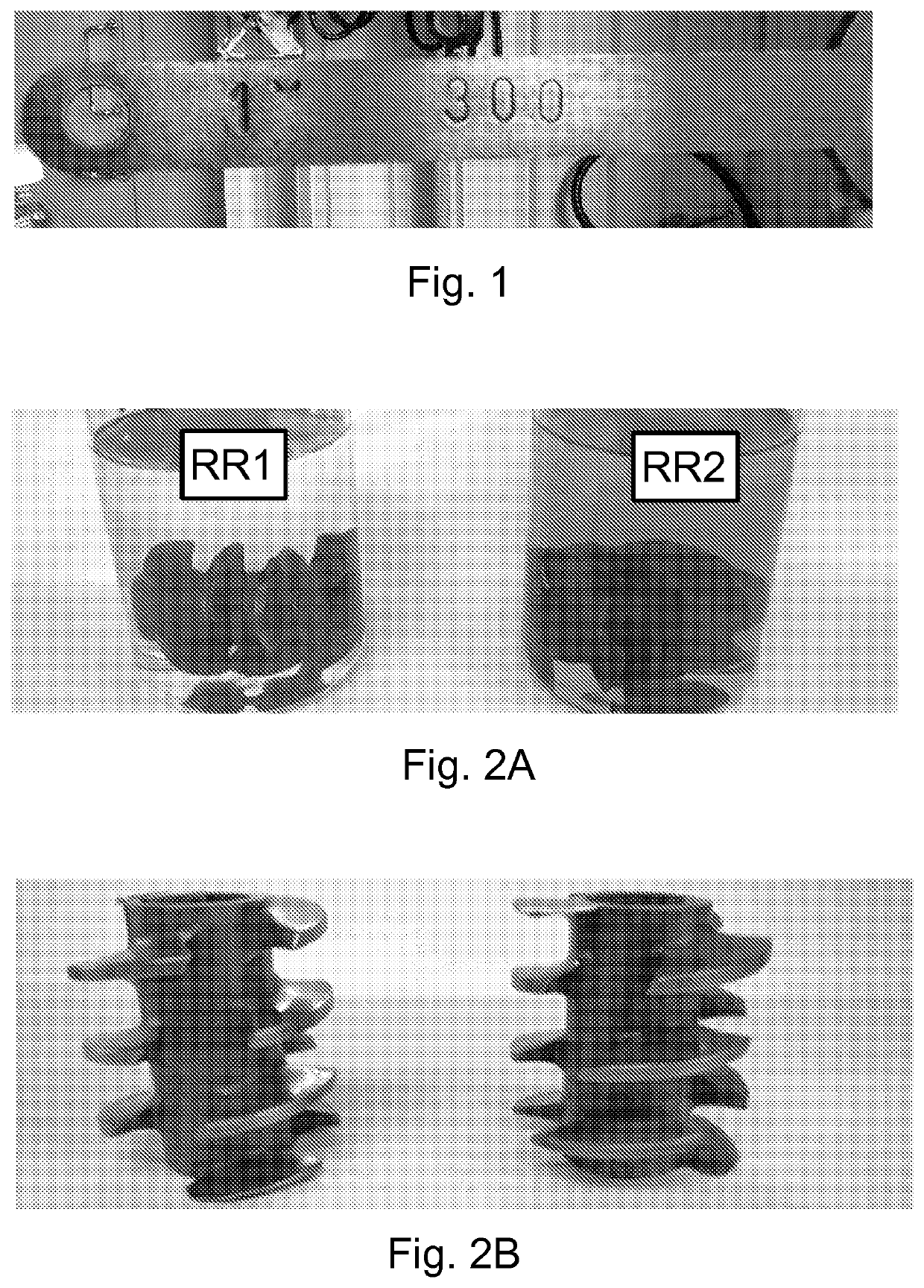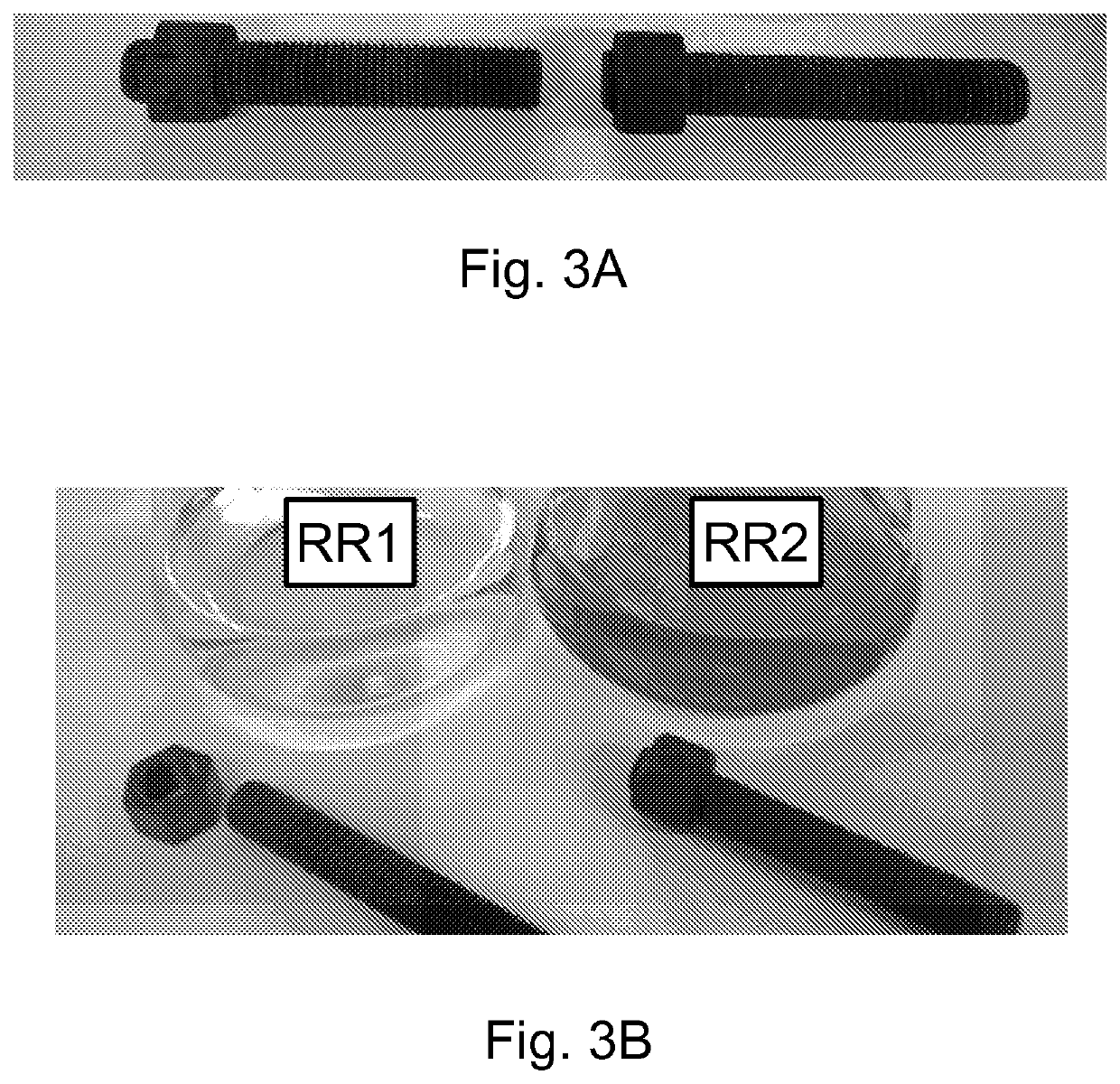Penetrating oil and method for producing the same
a technology oil, which is applied in the field can solve the problems of health concerns, impairing the lubricating properties of penetrating and releasing oils, and their use usually poses environmental concerns
- Summary
- Abstract
- Description
- Claims
- Application Information
AI Technical Summary
Benefits of technology
Problems solved by technology
Method used
Image
Examples
example 1
Rust Removal and Release Properties of Isoalkane Solvent
[0099]Three experiments were conducted to study the rust removal and release properties of isoalkane solvent. In the first experiment (Example 1.1) the rust removal properties of an isoalkane solvent were compared with those of a commercial petroleum naphtha based rust remover. In the second experiment (Example 1.2) the rust removal properties of the isoalkane solvent were compared with the rust removal properties of a commercial multipurpose oil based on mineral oil and petroleum distillates. In the third experiment (Example 1.3), the release properties of the isoalkane solvent were compared with the release properties of the commercial multipurpose oil based on mineral oil and petroleum distillates.
[0100]The isoalkane solvent employed in all Examples 1.1, 1.2, and 1.3 comprised approximately 94 wt-% isoalkanes and 6 wt-% normal alkanes. The composition of the isoalkane solvent was analysed by gas chromatography (GC) and norma...
example 1.1
[0101]A rusted metal tool was rubbed for approximately 5 min with steel wool and either the above described isoalkane solvent or a sprayable commercial petroleum naphtha based rust remover as rubbing aid. The commercially available rust remover employed in this experiment was an aerosol comprising mainly hydrotreated heavy petroleum naphtha, and propane and butane as propellants.
[0102]FIG. 1 shows the metal tool after the rust removal treatments by rubbing. The left end of the tool (with the inscription “1”) was treated with steel wool and the commercial rust remover, whereas the right end of the tool (with the inscription “300”) was treated with steel wool and the isoalkane solvent. Both treatments were found to remove rust. However, the treatment with steel wool and the isoalkane solvent surprisingly removed more rust than the corresponding treatment with the commercial rust remover. Thus, the isoalkane solvent showed very good rust removal properties.
example 1.2
Rust Removal, Immersion
[0103]Rusted cylindrical metal objects with a number of protrusions as shown in FIG. 2A were immersed for 24 h at 25° C. in 400 ml of the isoalkane solvent described in the foregoing (RR1) and in a commercial multipurpose oil based on mineral oil and petroleum distillates (RR2), respectively. Said commercial multipurpose oil employed in this experiment comprised 50-75 wt-% hydrotreated, light petroleum distillates, such as kerosene, 10-25 wt-% mineral oil, and 1-5 wt-% sulfonic acids, petroleum and / or sodium salts. Said multipurpose oil is recommended for use, for example, as a cleaner for corroded areas, as a lubricant, and as a release oil for freeing components bonded by dirt and scale and for loosening rusted or seized parts. In FIG. 2A, the beaker at the left contains one of the metal objects immersed in the isoalkane solvent (RR1) and the beaker at the right contains one of the metal objects immersed in the commercially available multipurpose oil (RR2). ...
PUM
 Login to View More
Login to View More Abstract
Description
Claims
Application Information
 Login to View More
Login to View More - R&D
- Intellectual Property
- Life Sciences
- Materials
- Tech Scout
- Unparalleled Data Quality
- Higher Quality Content
- 60% Fewer Hallucinations
Browse by: Latest US Patents, China's latest patents, Technical Efficacy Thesaurus, Application Domain, Technology Topic, Popular Technical Reports.
© 2025 PatSnap. All rights reserved.Legal|Privacy policy|Modern Slavery Act Transparency Statement|Sitemap|About US| Contact US: help@patsnap.com


